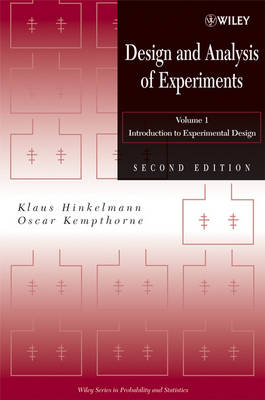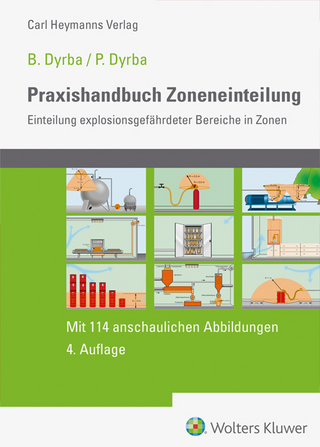
Design and Analysis of Experiments, Volume 1
Wiley-Interscience (Verlag)
978-0-471-72756-9 (ISBN)
This user-friendly new edition reflects a modern and accessible approach to experimental design and analysis Design and Analysis of Experiments, Volume 1, Second Edition provides a general introduction to the philosophy, theory, and practice of designing scientific comparative experiments and also details the intricacies that are often encountered throughout the design and analysis processes. With the addition of extensive numerical examples and expanded treatment of key concepts, this book further addresses the needs of practitioners and successfully provides a solid understanding of the relationship between the quality of experimental design and the validity of conclusions.
This Second Edition continues to provide the theoretical basis of the principles of experimental design in conjunction with the statistical framework within which to apply the fundamental concepts. The difference between experimental studies and observational studies is addressed, along with a discussion of the various components of experimental design: the error-control design, the treatment design, and the observation design. A series of error-control designs are presented based on fundamental design principles, such as randomization, local control (blocking), the Latin square principle, the split-unit principle, and the notion of factorial treatment structure. This book also emphasizes the practical aspects of designing and analyzing experiments and features:
Increased coverage of the practical aspects of designing and analyzing experiments, complete with the steps needed to plan and construct an experiment
A case study that explores the various types of interaction between both treatment and blocking factors, and numerical and graphical techniques are provided to analyze and interpret these interactions
Discussion of the important distinctions between two types of blocking factors and their role in the process of drawing statistical inferences from an experiment
A new chapter devoted entirely to repeated measures, highlighting its relationship to split-plot and split-block designs
Numerical examples using SAS® to illustrate the analyses of data from various designs and to construct factorial designs that relate the results to the theoretical derivations
Design and Analysis of Experiments, Volume 1, Second Edition is an ideal textbook for first-year graduate courses in experimental design and also serves as a practical, hands-on reference for statisticians and researchers across a wide array of subject areas, including biological sciences, engineering, medicine, pharmacology, psychology, and business.
Klaus Hinkelmann, PhD, is Emeritus Professor of Statistics in the Department of Statistics at Virginia Polytechnic Institute and State University. A Fellow of the American Statistical Association and the American Association for the Advancement of Science, Dr. Hinkelmann has published extensively in the areas of design of experiments, statistical methods, and biometry. The late Oscar Kempthorne, ScD, was Emeritus Professor of Statistics and Emeritus Distinguished Professor of Liberal Arts and Sciences at Iowa State University. He was the recipient of many honors within the statistics profession.
1. The Processes of Science. 1.1 Introduction.
1.2 Development of Theory.
1.3 The Nature and Role of Theory in Science.
1.4 Varieties of Theory.
1.5 The Problem of General Science.
1.6 Causality.
1.7 The Upshot.
1.8 What Is An Experiment?.
1.9 Statistical Inference.
2. Principles of Experimental Design.
2.1 Confirmatory and Exploratory Experiments.
2.2 Steps of Designed Investigations.
2.3 The Linear Model.
2.4 Illustrating Individual Steps: Study 1.
2.5 Three Principles of Experimental Design.
2.6 The Statistical Triangle and Study 2.
2.7 Planning the Experiment.
2.8 Cooperation between Scientist and Statistician.
2.9 General Principle of Inference.
2.10 Other Considerations for Experimental Designs.
3. Survey of Designs and Analyses.
3.1 Introduction.
3.2 Error-Control Designs.
3.3 Treatment Designs.
3.4 Combining Ideas.
3.5 Sampling Designs.
3.6 Analysis and Statistical Software.
3.7 Summary.
4. Linear Model Theory.
4.1 Introduction.
4.2 Representation of Linear Models.
4.3 Functional and Classificatory Linear Models.
4.4 The Fitting Of Y .= X_.
4.5 The Moore-Penrose Generalized Inverse.
4.6 The Conditioned Linear Model.
4.7 The Two-Part Linear Model.
4.8 A Special Case of a Partitioned Model.
4.9 Three-Part Models.
4.10 The Two-Way Classification Without Interaction.
4.11 The K-Part Linear Model.
4.12 Balanced Classificatory Structures.
4.13 Unbalanced Data Structures.
4.14 Analysis of Covariance Model.
4.15 From Data Analysis to Statistical Inference.
4.16 The Simple Normal Stochastic Linear Model.
4.17 Distribution Theory with GMNLM.
4.18 Mixed Models.
5. Randomization.
5.1 Introduction.
5.2 The Tea Tasting Lady.
5.3 A Triangular Experiment.
5.4 The Simple Arithmetical Experiment.
5.5 Randomization Ideas for Intervention Experiments.
5.6 The General Idea of the Experiment Randomization Test.
5.7 Introduction to Subsequent.
6. The Completely Randomized Design.
6.1 Introduction and Definition.
6.2 The Randomization Process.
6.3 The Derived Linear Model.
6.4 Analysis Of Variance.
6.5 Statistical Tests.
6.6 Approximating the Randomization Test.
6.7 CRD with Unequal Numbers of Replications.
6.8 Number of Replications.
6.9 Subsampling In A CRD.
6.10 Transformations.
6.11 Examples Using SASR.
7. Comparisons of Treatments.
7.1 Introduction.
7.2 Comparisons for Qualitative Treatments.
7.3 Orthogonality and Orthogonal Comparisons.
7.4 Comparisons for Quantitative Treatments.
7.5 Multiple Comparison Procedures.
7.6 Grouping Treatments.
7.7 Examples Using SAS.
8. Use of Supplementary Information.
8.1 Introduction.
8.2 Motivation of the Procedure.
8.3 Analysis of Covariance Procedure.
8.4 Treatment Comparisons.
8.5 Violation of Assumptions.
8.6 Analysis of Covariance with Subsampling.
8.7 The Case of Several Covariates.
8.8 Examples Using SASR.
9. Randomized Block Designs.
9.1 Introduction.
9.2 Randomized Complete Block Design.
9.3 Relative Efficiency of the RCBD.
9.4 Analysis of Covariance.
9.5 Missing Observations.
9.6 Nonadditivity in the RCBD.
9.7 The Generalized Randomized Block Design.
9.8 Incomplete Block Designs.
9.9 Systematic Block Designs.
9.10 Examples Using SASR.
10. Latin Square Type Designs.
10.1 Introduction and Motivation.
10.2 Latin Square Design.
10.3 Replicated Latin Squares.
10.4 Latin Rectangles.
10.5 Incomplete Latin Squares.
10.6 Orthogonal Latin Squares.
10.7 Change-Over Designs.
10.8 Examples Using SAS.
11. Factorial Experiments: Basic Ideas.
11.1 Introduction.
11.2 Inferences from Factorial Experiments.
11.3 Experiments with Factors at Two Levels.
11.4 The Interpretation of Effects and Interactions.
11.5 Interactions: A Case Study.
11.6 2n Factorials in Incomplete Blocks.
11.7 Fractions of 2n Factorials.
11.8 Orthogonal Main Effect Plans for 2n Factorials.
11.9 Experiments with Factors at Three Levels.
11.10experimentswith Factors at Two and Three Levels.
11.11examples Using SAS.
12. Response Surface Designs.
12.1 Introduction.
12.2 Formulation of the Problem.
12.3 First-Order Models and Designs.
12.4 Second-Order Models and Designs.
12.5 Integrated Mean Squared Error Designs.
12.6 Searching For an Optimum.
12.7 Experiments with Mixtures.
12.8 Examples Using SAS.
13. Split-Plot Type Designs.
13.1 Introduction.
13.2 The Simple Split-Plot Design.
13.3 Relative Efficiency of Split-Plot Design.
13.4 Other Forms of Split-Plot Designs.
13.5 Split-Block Design.
13.6 The Split-Split-Plot Design.
13.7 Examples Using SAS.
14. Designs with Repeated Measures.
14.1 Introduction.
14.2 Methods for Analyzing Repeated Measures Data.
14.3 Examples Using SAS.
14.4 Exercises.
| Erscheint lt. Verlag | 18.1.2008 |
|---|---|
| Reihe/Serie | Wiley Series in Probability and Statistics |
| Zusatzinfo | Charts: 1 B&W, 0 Color; Drawings: 9 B&W, 0 Color; Graphs: 10 B&W, 0 Color |
| Sprache | englisch |
| Maße | 155 x 234 mm |
| Gewicht | 1270 g |
| Themenwelt | Technik |
| ISBN-10 | 0-471-72756-3 / 0471727563 |
| ISBN-13 | 978-0-471-72756-9 / 9780471727569 |
| Zustand | Neuware |
| Haben Sie eine Frage zum Produkt? |
aus dem Bereich


